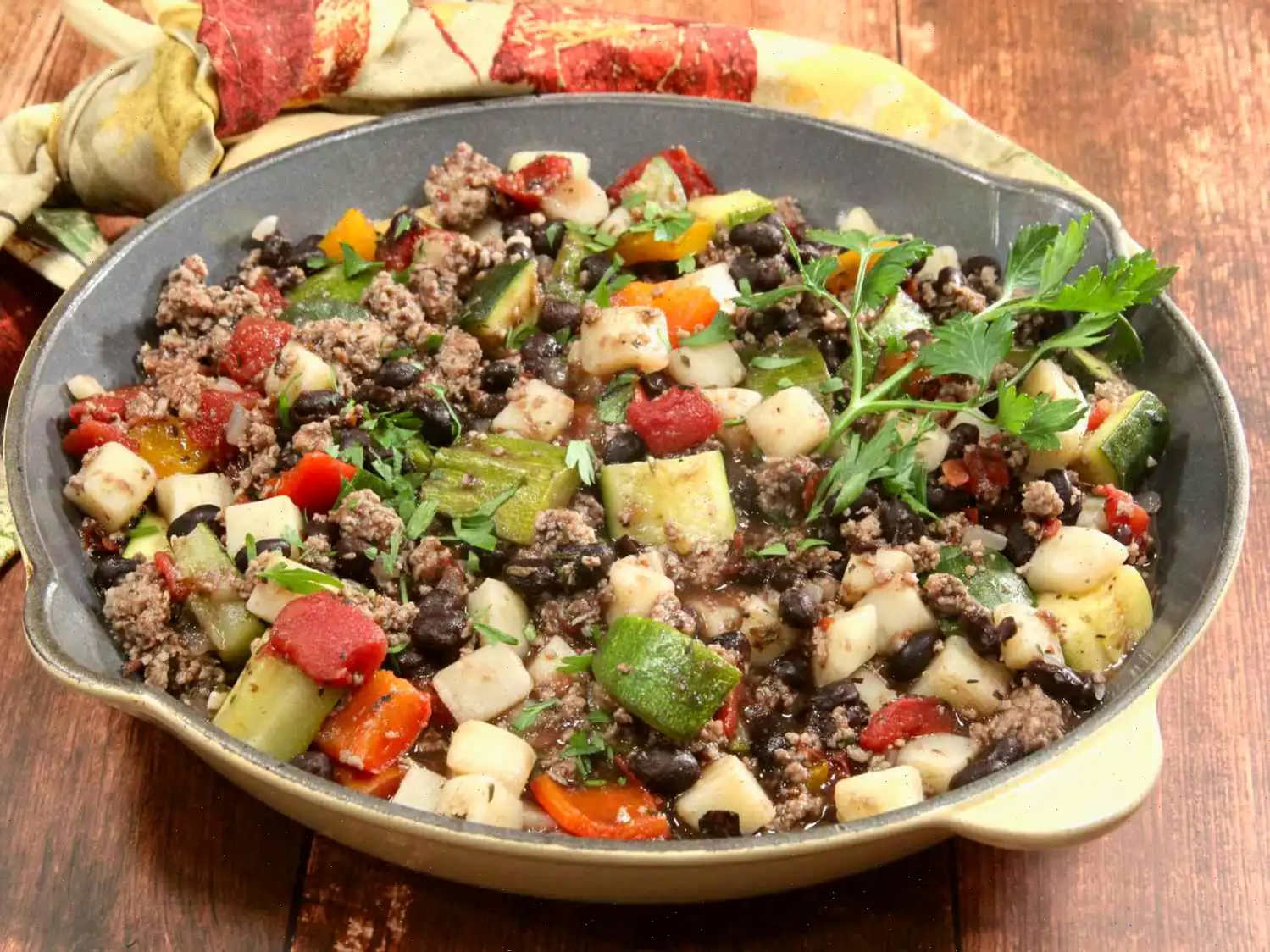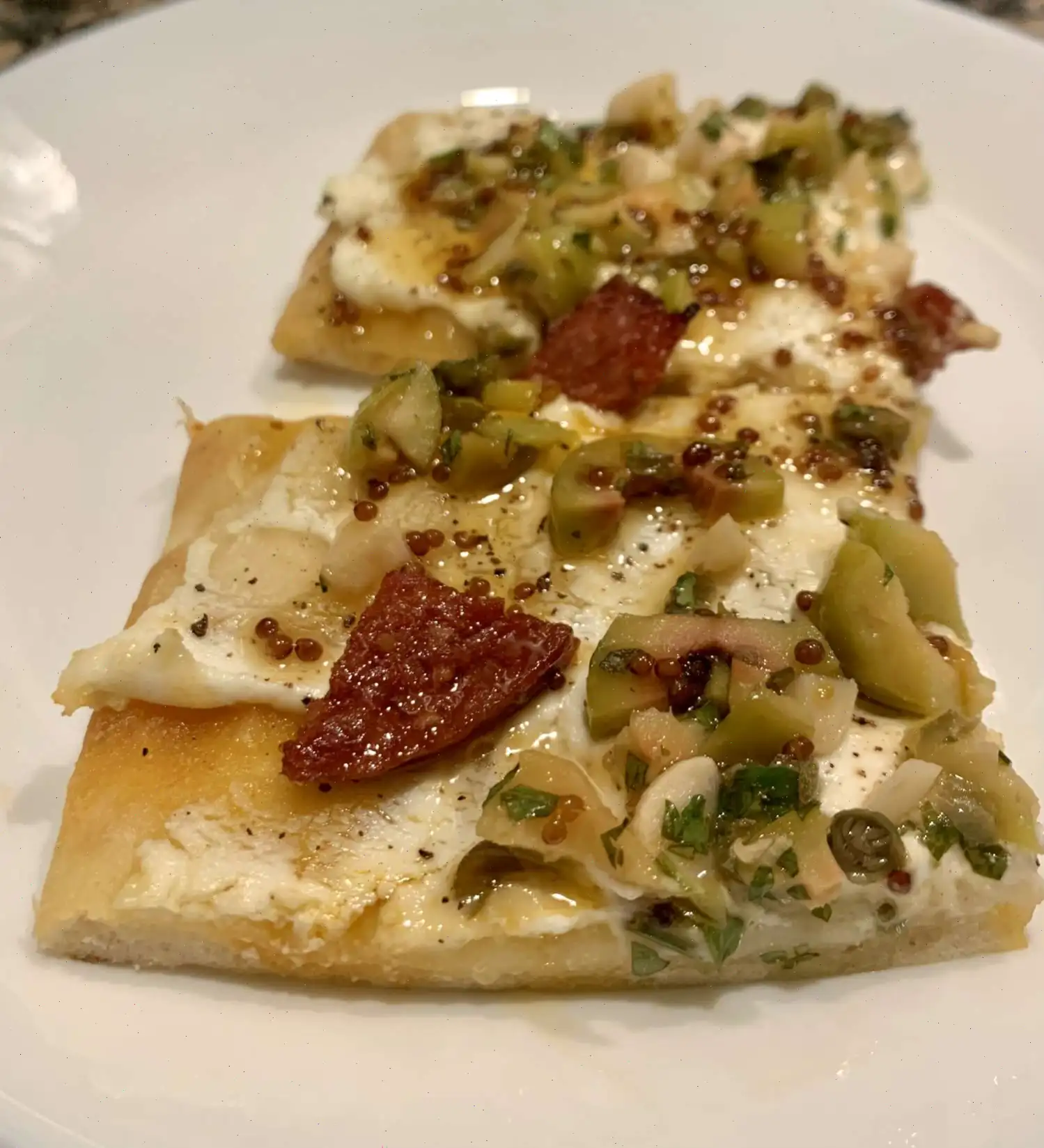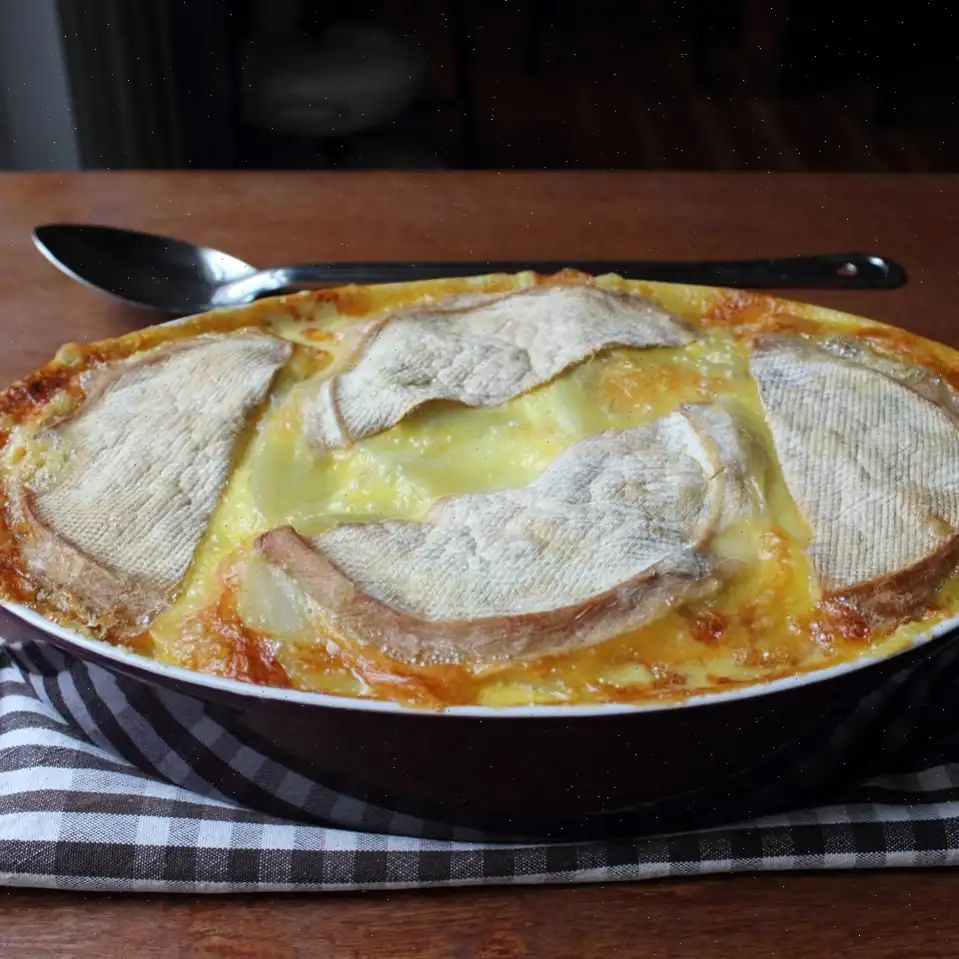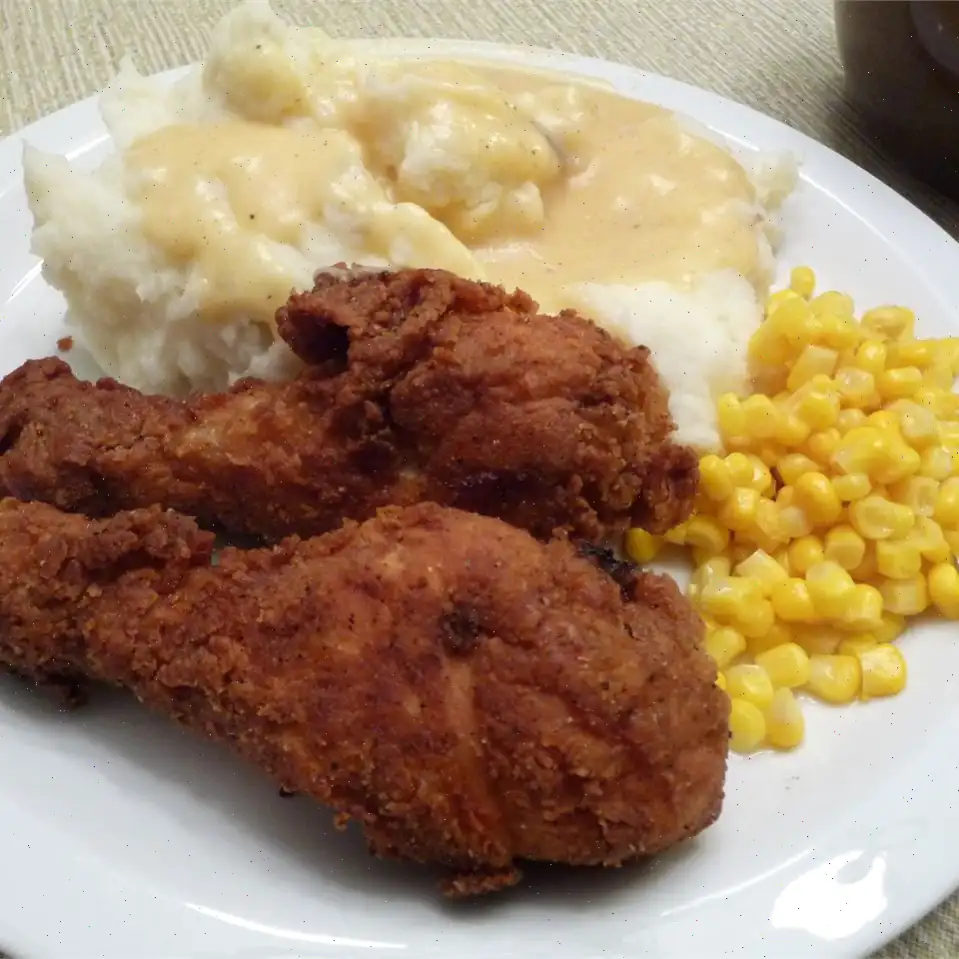
Seafood Mac and Cheese Recipe
Ingredients
This recipe was developed at its original yield. Ingredient amounts are automatically adjusted, but cooking times and steps remain unchanged. Note that not all recipes scale perfectly.
Original recipe (1X) yields 8 servings.
- 12 ounces elbow macaroni
- 4 (4 ounce) lobster tails, thawed if frozen
- 12 ounces shredded Gruyre cheese
- 12 ounces Swiss-style processed cheese slices, torn
- 5 tablespoons all-purpose flour
- 4 tablespoons butter
- 1 shallot, chopped
- 3 cloves garlic, minced
- 2 3/4 cups whole milk
- 1/3 cup dry white wine
- 1 (6 ounce) can refrigerated lump crabmeat, drained
- 1 1/2 teaspoons seafood seasoning, such as Old Bay, plus more for garnish
- 1/4 teaspoon freshly ground black pepper
- 2 cups cubed day-old crusty country bread
- Chopped fresh chives, for garnish
- Lemon wedges, for serving
Directions
- Preheat the oven to 350F (180C). Grease a 9x13-inch baking dish.
- Bring a large pot of lightly salted water to a boil. Cook the macaroni, stirring occasionally, until tender but firm to the bite, about 8 minutes. Reserve 2 cups of the cooking water, then drain the macaroni. Rinse with cold water and drain again.
- Return the reserved pasta water to the pot. Add the lobster tails and bring to a boil. Reduce the heat to medium-low, cover, and steam until the lobster meat is firm and opaque, about 3 minutes. Transfer the lobster tails to a tray and allow them to cool for 2-3 minutes. Once cool, remove the meat and cut into bite-sized pieces. Rinse the pot.
- Meanwhile, combine the Gruyre cheese, Swiss cheese, and flour in a large bowl.
- Melt 1 tablespoon of butter in the empty pasta pot over medium heat. Add the shallot and garlic, and cook, stirring occasionally, until the shallot softens, about 3 minutes.
- Gradually add the milk and wine, heating just until bubbles form around the edge of the pot. Slowly whisk in the cheese mixture, 1 cup at a time, until the cheese is melted (the mixture may not be completely smooth at this point). Remove from heat.
- Stir in the lobster, crabmeat, 1 teaspoon of seafood seasoning, and pepper. Add the macaroni and mix to combine.
- Pulse the bread cubes in a food processor to create large coarse crumbs. Melt the remaining 3 tablespoons of butter and stir in the remaining 1/2 teaspoon of seafood seasoning. Add the bread crumbs and toss to coat evenly.
- Pour the macaroni mixture into the prepared baking dish and top with the breadcrumb mixture.
- Bake in the preheated oven until the dish is hot and bubbly, and the top is golden brown, about 15 to 20 minutes.
- Garnish with fresh chives and additional seafood seasoning. Serve with lemon wedges.
Cooks Note
To remove lobster meat from shells, use kitchen shears or a sharp knife to cut lengthwise through the center of the hard top shells and meat, cutting to, but not through, the bottoms of the shells. Press the shell halves apart with your fingers and use your fingers to remove the meat.
If using fresh bread, preheat the oven to 325F (165C) and bake the cubes until they are dried out, about 8 to 10 minutes.
Nutrition Facts (per serving)
- Calories: 710
- Total Fat: 38g (48% Daily Value)
- Saturated Fat: 21g (107% Daily Value)
- Cholesterol: 182mg (61% Daily Value)
- Sodium: 846mg (37% Daily Value)
- Total Carbohydrate: 42g (15% Daily Value)
- Dietary Fiber: 4g (16% Daily Value)
- Total Sugars: 10g
- Protein: 51g (102% Daily Value)
- Vitamin C: 57mg (63% Daily Value)
- Calcium: 1013mg (78% Daily Value)
- Iron: 3mg (17% Daily Value)
- Potassium: 600mg (13% Daily Value)
* Percent Daily Values are based on a 2,000 calorie diet. Your daily values may be higher or lower depending on your calorie needs.
The Story Behind Seafood Mac and Cheese
Seafood Mac and Cheese is a luxurious twist on the classic comfort food mac and cheese. While traditional macaroni and cheese has roots in European cuisinedating back to medieval Italy and later popularized in Englandthe seafood variant emerged in the coastal regions of the United States where fresh lobster, crab, and shrimp were abundant. It likely originated in the mid-20th century as chefs and home cooks experimented with combining rich cheeses and tender seafood for special occasions, creating a dish that is both indulgent and celebratory.
Regional Variations
This dish is particularly popular in the Northeastern United States, especially in New England, where lobster and crab are staple ingredients. In the Southern U.S., shrimp is often the preferred seafood, and the cheese sauce may include sharper cheddar varieties. Some coastal regions add a hint of Old Bay seasoning or Cajun spices, giving the dish a slightly zesty and aromatic profile that reflects the local palate. Even within the same state, recipes may differ based on the availability of fresh seafood and local cheese preferences.
How It Differs from Similar Dishes
Seafood Mac and Cheese stands apart from traditional mac and cheese and baked pasta dishes because of its combination of premium seafood and creamy, cheesy sauce. Unlike a simple baked macaroni dish with breadcrumbs, this recipe often incorporates multiple cheeses, such as Gruyre and Swiss, for depth of flavor. The addition of white wine and seafood seasoning also adds complexity, distinguishing it from simpler casseroles or pasta bakes.
Where It Is Typically Served
This indulgent dish is most commonly found in upscale seafood restaurants, coastal bistros, and during festive gatherings. It is frequently served as a main course for dinner or a special brunch. In home kitchens, it is often prepared for holidays, family celebrations, or dinner parties, offering a sophisticated twist on a comfort food classic that can impress guests while remaining hearty and satisfying.
Interesting Facts
- Seafood Mac and Cheese is considered a fusion dish, blending traditional American comfort food with seafood commonly found in European and North American coastal cuisines.
- Some chefs serve it in individual ramekins, creating a visually elegant presentation while maintaining a crispy breadcrumb topping.
- The dish pairs exceptionally well with white wine, particularly Chardonnay or Sauvignon Blanc, which complements both the creamy cheese and the delicate seafood flavors.
- In culinary competitions, variations of this dish are often judged on the balance between cheese richness, seafood texture, and breadcrumb crunch.
- Despite its richness, Seafood Mac and Cheese can be lightened by using low-fat milk or a mixture of cheeses with varying fat content, without losing its signature flavor.
You can listen to this recipe in AI audio format. Simply click the play button below to listen to the content in a format that suits you best. It’s a great way to absorb information on the go!








